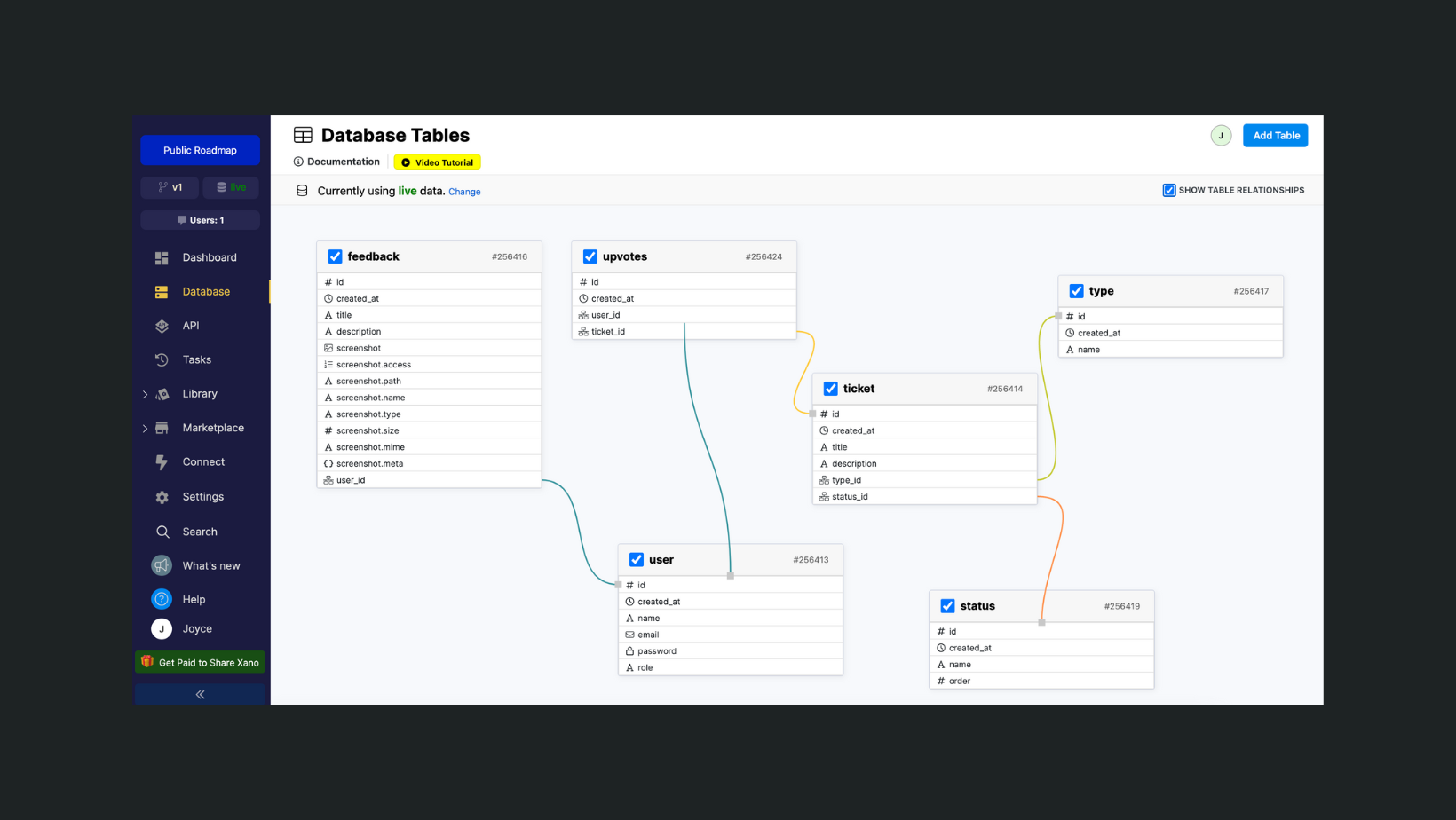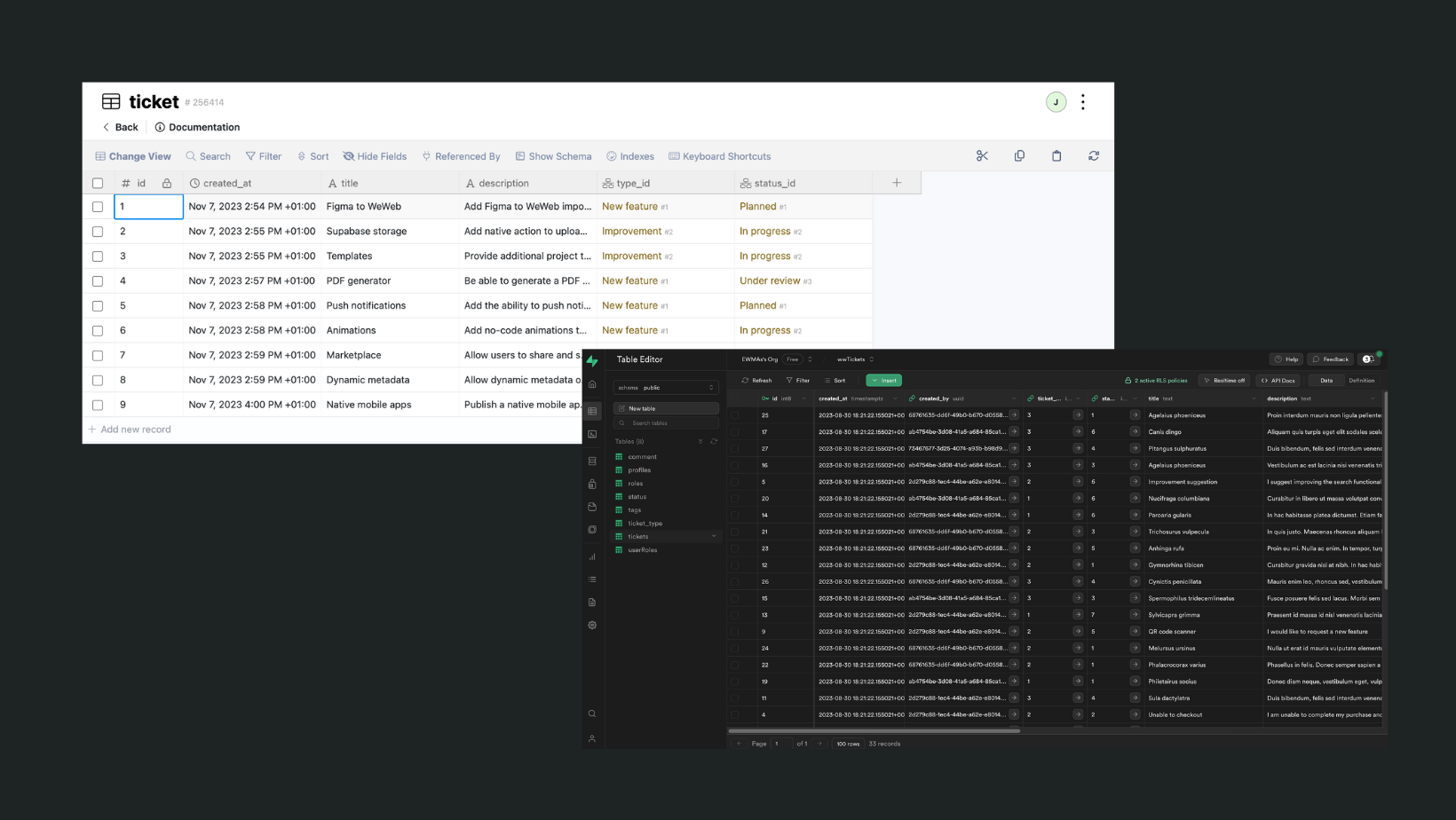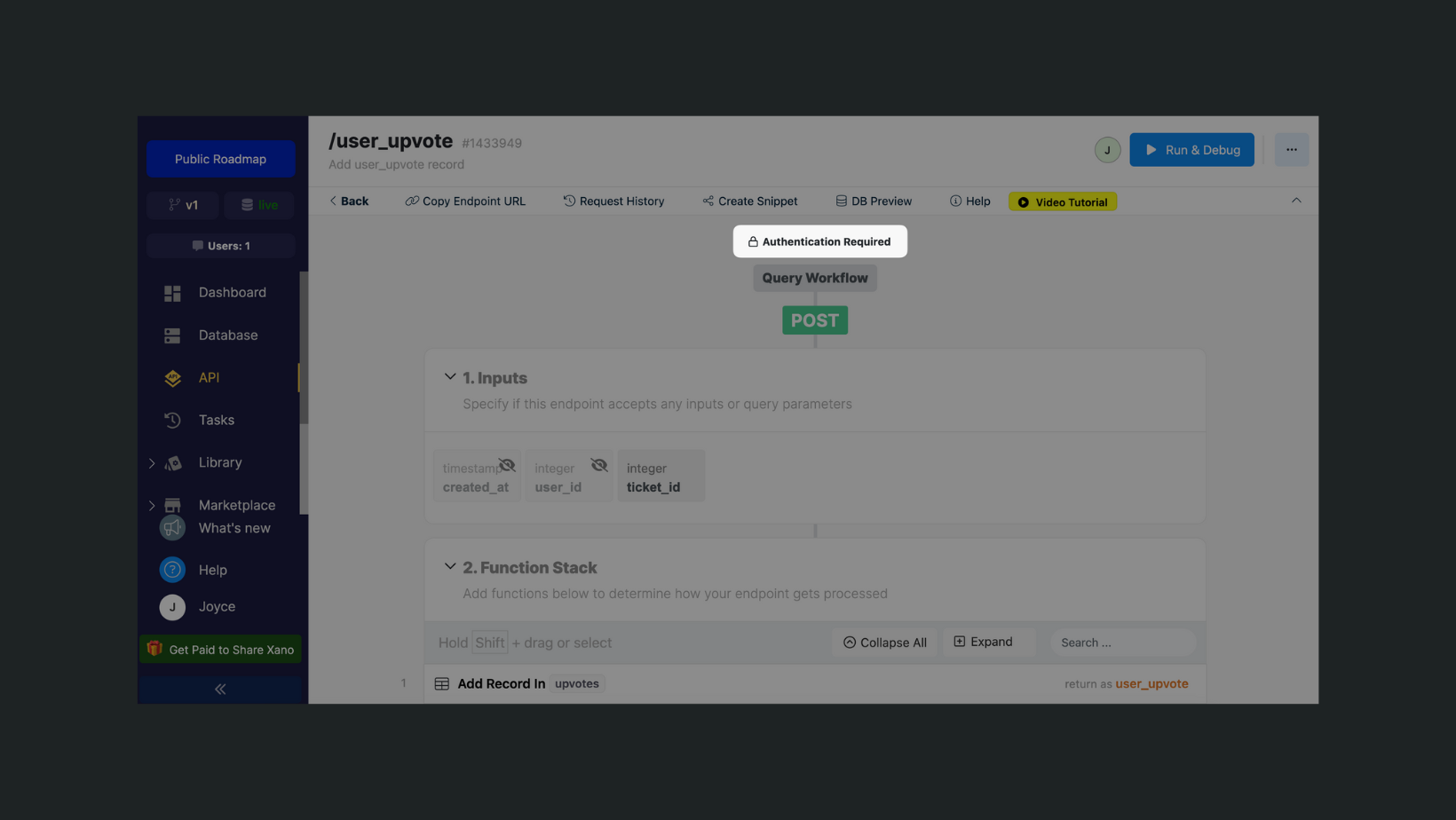At WeWeb, we hold both Xano and Supabase in high regard. Each provides outstanding capabilities for creating no-code databases, crafting API endpoints, and managing user authentication.
Thanks to WeWeb's native integrations, users can seamlessly incorporate either tool into their project, and many people ask us which of Xano or Supabase is better.
The truth is both tools are outstanding and can scale with millions of records and daily active users.
In this article, we aim to highlight the pros and cons of each option to help you make an informed decision based on your unique requirements.
Underlying both Xano and Supabase is the robust PostgreSQL database, celebrated for its reliability and the force behind major platforms like Airbnb—and yes, WeWeb too 😉
These databases excel in mapping complex relationships across multiple entities, making them ideal for the interconnected nature of web applications.
Their relational design enables the storage of data in table formats and the establishment of inter-table relationships, akin to using Excel or Airtable:

Relational databases are great for managing intricate data structures and connections.
Ultimately, Xano and Supabase both present user-friendly interfaces over SQL databases:

These friendly interfaces facilitate data operations as one would in spreadsheet applications. Both platforms offer filtering and sorting tools, enhancing the precision of data management.
In WeWeb, this translates to using tables as collections, ensuring a consistent experience with either tool. Integration is simplified as WeWeb provides native data source plugins for both Xano and Supabase.
API endpoints are critical to query database content.
Supabase instantly sets up a complete CRUD system when you establish a table, streamlining queries and updates from external apps, like a WeWeb frontend. Nevertheless, these operations are standardized with limited customization.
While Supabase supports related data queries via API—which WeWeb collections can access with a native plugin—that's the extent of its offerings.
Conversely, Xano demands manual endpoint creation for your CRUD API, yet these can be tailored to specific requirements. You can interlink tables, perform external API calls, and calculate custom data on-the-fly.
Xano's approach resembles using Zapier or Make to craft bespoke workflows that align with your scenarios, all accessible through WeWeb with our native plugin.
[SCREENSHOT OF XANO ENDPOINTS]
Both platforms are equipped with out-of-the-box user authentication systems. You can create a user table to hold essential login credentials for your applications, whether web-based or mobile.
They also have OAuth integrations to facilitate social logins from third-party services like Google, LinkedIn, Twitter, or Facebook. Configuration on Xano or Supabase is straightforward, and they take care of the authentication processes.
Moreover, both tools have authentication plugins available in WeWeb, ensuring secure user interactions within your WeWeb applications.

In today's no-code landscape, security is paramount. Implementing user roles and permissions is essential to govern data access within your applications.
Xano addresses security at the endpoint level, allowing for authenticated user access via a bearer token. Custom roles and permissions must be managed within each endpoint, affording extensive customization but requiring more effort:

Supabase adopts "Row-Level Security" (RLS) at table level. These are SQL rules that dictate interactions with a table, enforcing security measures for each API call. While this requires an SQL policies that is more technical than Xano's full no-code approach, this approach ensures a secure default setting at table level:

When integrating these tools with WeWeb, the handling of user credentials is automated as WeWeb transmits the user token. Nevertheless, adherence to security protocols is necessary to access your data within the WeWeb editor. So if a table (in Supabase) or endpoint (in Xano) requires a user to be authenticated to view data, you will need to be logged in as a user of your app when trying to create a data collection in WeWeb.
Background tasks, such as automated emails, data cleaning, or preprocessing, are vital components of a backend application.
Xano enables no-code task and function creation, offering a visual platform to design workflows for scheduled or triggered operations.
In contrast, Supabase uses JavaScript lambda functions, which, with the assistance of an AI copilot, can now be crafted through prompts. However, with this feature in beta, coupling with tools like Zapier or Make is advisable.
The question of data security and ownership is crucial, particularly for a backend housing critical business data.
While WeWeb complies with GDPR and HIPAA by not storing dynamic data on its servers, Xano and Supabase adopt different approaches to privacy.
Supabase's open-source nature allows for self-hosting, offering direct access to the PostgreSQL database.
On the other hand, Xano is not open-source, but does provide HIPAA-compliant servers and the option for regional hosting, alongside an on-premise pricing plan for self-hosting your Xano instance.
Discussing the full extent of their pricing models is beyond our scope here, but both tools offer competitive pricing compared to the expenses of coding and hosting your own backend. The determining factor is usually the scale of data and the number of API calls you require.
For detailed pricing information, please refer to their respective pricing pages:
Both Xano and Supabase integrate smoothly with WeWeb, complemented by native plugins for data queries and user authentication.
Choosing between them often boils down to personal preference and background. Web developers with a coding background and an open-source culture might lean towards the technical depth of Supabase, while programmers with a no-code background may favor the interface of Xano.
Regardless of your choice, consider pairing it with WeWeb for an optimal frontend application experience.
